What is social commerce? Social commerce is the ability to make a product purchase from a third-party company within the native social media experience.
Table of contents
What is social commerce?
Social commerce is the promotion, selling and purchase of products directly within social media platforms.
For example, you can browse and compare products on Facebook, and then make the purchase on Facebook itself instead of going to the company’s site to make the purchase. Or you can learn about a product in a tweet, and then make the purchase on Twitter itself.
Social Commerce Examples
Three social media sites that are dominating the social commerce space: Facebook, Instagram, and Pinterest.
How are these companies standing out from their competitors? Below are examples from Facebook, Instagram, and Pinterest that will help you start creating your own social commerce strategy.
1. Facebook
Facebook has doubled down on social commerce. Companies can create entire “Shop Now” stores, and Messenger is being used by companies to interact with consumers (both pre- and post-sale).
With a Facebook store, you can…
- Upload products and product information;
- Curate and customize your shop’s product catalog;
- Sell directly from your Page;
- Manage orders;
- Run a Facebook ad to promote one of your products;
- Get insights.
You’ll start off with something like this…
And build it out however you like. A word of advice: select the right products for the audience and be aware of product order. You don’t need to put your entire inventory in your Facebook shop. Try releasing products to Facebook first to see how they go over, rerelease old products on Facebook, focus on your top sellers, and so on.
Experiment to see what works for you—but remember that Facebook is a social network and not everyone may be sold on this social commerce concept yet. Don’t overwhelm your audience with choice—narrow it down for them.
Case study: MVMT Watches via Shopify
Shopify released a case study of MVMT Watches, who wanted to simplify their path to purchase as their social media presence grew…

Spencer Stumbaugh, MVMT Watches:
“It’s really important to cut out steps in the purchasing process. It’s almost like having a new landing page, but one customers can purchase from instantly.” (via Shopify)
So, Spencer and his team launched their Facebook store. The results:
- Approximately 1,500 people visited MVMT’s Facebook store within seven days.
- Approximately 60,000 users visited the store in a 90-day period.
- The .5% conversion rate resulted in more than $15,000 in revenue.
Now, those numbers were released back in 2016, so it’s safe to assume revenue has increased since. In addition, it’s worth noting that MVMT Watches did have a Facebook ad budget, which would have assisted with this traction.
Spencer believes this is just the beginning of social commerce, and not just for MVMT Watches…

Spencer Stumbaugh, MVMT Watches:
“I think this is what everyone is going to be doing in the future. Getting in on this early and cutting the number of steps in the conversion process improves the customer experience and helps us grow in new ways.” (via Shopify)
2. Instagram
Some 70% of shopping enthusiasts turn to Instagram for product discovery—at least that’s what Facebook data reveals.
It’s no surprise that Instagram introduced Instagram Shopping, a feature that allows users to tap on images and stories to view products featured on it.
Instagram Shopping is currently available to companies in over 70 countries that…
- Sell physical goods;
- Have an Instagram business account connected to a Facebook page;
- Comply with Instagram’s merchant agreement and commerce policies.
Instagram also offers an in-app checkout feature to a limited number of merchants like Nike, Outdoor Voices, and Kylie Cosmetics, further confirming Facebook’s and Instagram’s ongoing focus on social commerce.
3. Pinterest
Buyable pins were released in June 2015. At the time, there were 30 million on the site, but just three months later, Pinterest reported that the number had doubled to 60 million. According to Shopify, the average order value of sales from Pinterest is $50, which is higher than any other social media site.
Here’s a look at the Pinterest commerce flow…
Pinterest has worked with a number of major retailers, like…
- Macy’s;
- Nordstrom;
- Bloomingdale’s;
- Wayfair.
What’s unique about Pinterest is that a small portion of the site’s content is original. According to one source, 80% of Pinterest content is repins. This is a major benefit for you, an original content creator.
Be sure to feature your products in various colors. I don’t need to tell you that the visual representation of your product is clutch, so spend the time (and money) to perfect your product images.
How does social commerce work?
Shopping offline is, inherently, a social experience. You’ll ask your friends and family for their opinion on products, you’ll buy the same brand of household items that your parents do, or you’ll simply go shopping as a pair / group.
But ecommerce? Not so social by nature.
Heidi Cohen agrees that that could be a major reason everyone is talking about the concept of social commerce…

Heidi Cohen, HeidiCohen.com:
“While shopping is essentially a social experience, think girls shopping at the local mall, online shopping is distinctly not social. Yet, regardless of where the purchase is made, many shopping decisions involve more than one individual’s input, be it a couple, parent and child, or friends.
With evolving technology, notably increased use of smartphones, and social media platforms, online shopping is changing and becoming more social. 74% of consumers rely on social networks to guide their purchase decisions. As a result, it’s a no brainer to sell where your customers are rather than trying to lure them to your site.
Social commerce is a nascent market that encompasses a broad array of options including group buying, social shopping, mobile apps, retailers adding social features, and shopping integrated into social media. Social commerce has taken off recently and is a growing trend as reported by Google.” (via HeidiCohen.com)
She goes on to offer some reasons you might want to add social commerce to your repertoire. Here are five of those ten reasons, in summary…
- Make smarter inventory and product development choices by asking customers to vote on the products they’d like to purchase.
- Increase the number of conversations taking place about your products and company.
- Increase the market for your products, reach new customers you might not have otherwise.
- Improve product discovery and awareness, personalize the customer experience based on known preferences. (Social media sites have a lot of data, right?)
- Encourage peer recommendations and reviews.
The benefits are clear, but one major question remains…
Does it actually work?
In a previous version of an article about the rise of native social commerce from a few years ago, HubSpot made some bold statements: “Remember when ecommerce was the go-to tactic for increasing brand awareness, finding new customers, and boosting sales?” and “Newsflash: The golden era has come to an end.”
(The article has been updated since then to focus solely on social commerce, but it’s still a valuable discussion starter.)
Is that really true? Is social commerce going to dwarf traditional ecommerce?
The truth is simple: more people are turning to social media for product recommendations and reviews. So, naturally, the concept of native social commerce sprouted up. Here’s how data about its adoption adds up.
A while ago, Statista released a prognosis for worldwide social commerce revenue from 2011 to 2015…
According to MarketingWeek, 56% of those surveyed are liking and following brands on social media to see products. Another 35% are doing so to get ideas for when they go shopping next.
Adoption among retailers in North America is growing, according to eMarketer.
But do people actually want to shop on social media? Not really, according to this particular study from a few years ago.
Note that this “social commerce boom” is driven heavily by the younger generation, according to the same study. Some 33% of 18- to 24-year-olds say they would like to purchase items directly on Facebook, 27% on Instagram, and 20% on Twitter. Ages 25 to 34 decline a bit; 30% on Facebook. People 54- to 65-years-old? A disappointing 10%.
Another study, conducted on social media users worldwide ages 16 to 64, found that only 9% of respondents have an interest in using Facebook’s buy buttons…
Statista’s data from 2018 show that as many as 82% of online consumers in the United States haven’t purchased products directly via social media.
Another study still, found that only 35% of millennials, typically a tech-friendly crowd, are likely to use a buy button on Facebook. Only 24% said they’d be interested in a Twitter buy button (which has since been deprecated).
According to Time Magazine, both Twitter and Facebook have claimed that approximately half of their users come to their sites to seek out products for purchase.
Yet the rate of ecommerce growth from social shopping exceeded the overall growth rate for ecommerce in the United States by about 10%, according to the Internet Retail Social Media 500 Report from a few years ago.
Why so much inconsistency? We’re still unclear on what social commerce is and is not. Is it native social selling? Is it encouraging social interaction during the traditional ecommerce flow? Is it buy buttons that take you from social media to the ecommerce site?
Nora Barnes, Director of University of Massachusetts Dartmouth’s Center for Marketing Research, says…
We really know very little about these buy buttons. As a consumer behavior specialist, I’m looking at this and saying, ‘Who wants or needs this? Who’s going to use it?’ I think millennials are saying the same thing.
Andy Atkinson of Morrison Supermarkets shares Nora’s skepticism…

Andy Atkinson, Morrison Supermarkets:
“We were a bit late to digital and social, it’s only been a focus for the last 18 months. But what we’ve noticed is using social channels purely to sell products will result in failure and most companies are making that mistake.
Social media isn’t a platform for selling. It is about reaching out and building a relationship. We want to adopt that progressive mentality.” (via Marketing Week)
Here’s what even the toughest critics can’t deny…
- Native social commerce will extend your reach and help you reach audiences who might never have found you otherwise.
- If done correctly, native social commerce removes the friction of having to browse on social media and then convert on another site.
What does it mean for ecommerce companies?
That’s the big question here. Should you make changes to accommodate this new interest in social commerce? If so, what can you do today?
The truth is that no one can tell you whether or not to experiment with social commerce because, well, it’s an experiment.
If you’re killing it right now without social commerce and have higher priority hypotheses to test, focus on that. But keep an eye on this “social commerce revolution.”
Take note of how it’s evolving, keep up with the latest features, maybe even play around with an account. But do you absolutely need to be on this bandwagon today? No.
Let’s say you do decide to experiment with social commerce, though. The first thing you need to do is your research. If you haven’t done any qualitative or quantitative research lately, it’s time to. You need to understand who your audience is, what they like and dislike, how they prefer to buy, where they’re spending their free time, etc.
The older your audience is, for example, the less likely they are to be responsive to social commerce, as we discovered earlier.
Once you have your demographic data, cross-reference it with the demographic data of the three social media sites. Here’s a look at Facebook’s…
While Facebook is fairly well-used across all demographics, it is especially popular with women and those aged 18 to 49.
And Instagram’s…
Instagram is most popular among those under the age of 30, and skewed towards urban population.
And finally, Pinterest’s…
Pinterest continues to be dominated by women, but men are slowly but surely closing the gap year after year.
Choose one social media site to start. Don’t try to conquer all three right out of the gate.
Finally, optimize endlessly. If you choose the social commerce route, you’ve effectively doubled your optimization work. Two stores, two user experiences, two sets of product pages, two checkout flows, etc. Be prepared for the amount of work you’ll need to put in to get this right, especially because it is still relatively uncharted territory.
If you want to see the results you’ve been reading about from big brands, you’ll likely need at least a small social advertising budget to expand your audience as well.
Conclusion
Social commerce seems to be a natural, slow-moving evolution of online buying. Here’s what you should know and do next about social commerce…
- Not everyone is sold on the concept of social commerce yet. The evidence (and definition) is conflicting.
- Decide whether your other hypotheses are a higher priority. There’s no rule that says you need to be involved in social commerce (yet).
- Keep an eye on how the trend develops, maintain an understanding of the features and possibilities.
- If you do decide to start with social commerce, conduct qualitative research to better understand your audience, what they like, how they like to buy, etc.
- Cross-reference your audience data with demographic info from the three social media sites. Choose one site that is the best fit.
- Optimize, optimize, optimize. You’ve just doubled your workload.
- Consider paid social ads to give you that little traction boost.

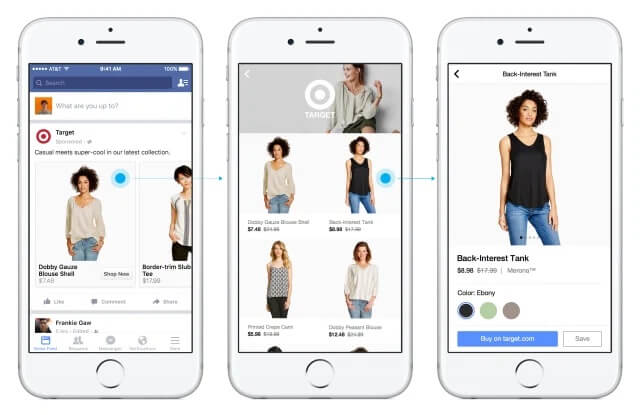
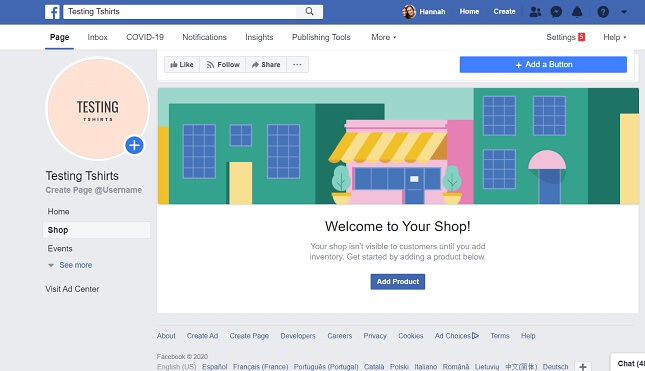



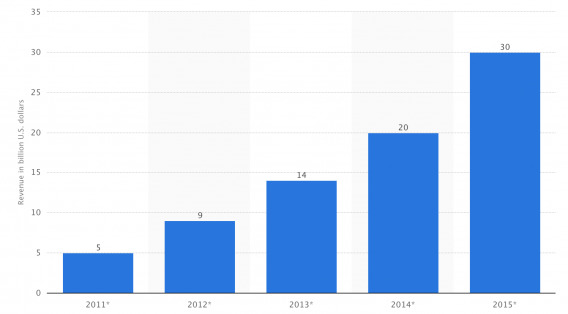
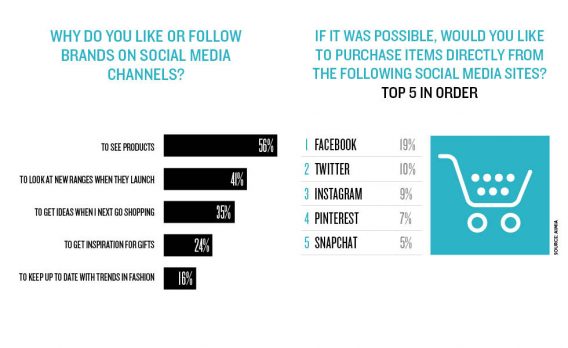
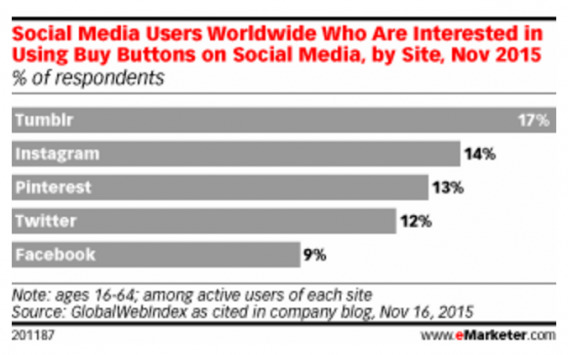







While I know it converts, does one really want to devote in optimizing their business for these social networks specifically?
Like people built up their organic following on Facebook before and had the rug pulled out from underneath them, I wouldn’t want to get anyone used to buying from me on these networks no how no way regardless of having captured their user information.
Hey Corey! Thanks for the comment. You bring up a good point.
Personally, would I prefer that they make it to my site to buy? Yes, I’d like to 100% own the experience, get the branding boost, etc. Would I shy away from optimizing social commerce if it’s converting? No.
You might not necessarily promote the ability to purchase on social media sites, but if the audience is there and expecting that they’ll have the ability to purchase, you might as well optimize for more conversions.
Thanks for sharing this amazing post.
The term social commerce was introduced by Yahoo! in November 2005[2] which describes a set of online collaborative shopping tools such as shared pick lists, user ratings and other user-generated content-sharing of online product information and advice.
Thanks for reading. I really appreciate the kind words.
That definition, I’d say, is quite out of date now. The space has grown leaps and bounds since 2005.
Nice Post Shanelle… Thanks for sharing this with us.
Thanks Jack! I appreciate the kind words.
Hi Shanelle!
Thank you so much for this post, it’s really helpful content.
We actually included it in our weekly eCommerce newsletter, check it out: https://hi.photoslurp.com/blog/content-for-ecommerce/
Thanks Luisana!
Well, conversions still aren’t there in Facebook and there’s now little incentive to build a fan base. I see this inclusion to be conflicting with the main strategy of Facebook. It’s like being in a couch talking with a friend, while news silos and other enterteinment pages claim for your attention while now you’ve got an Enciclopaedia salesman pitching you, all happening at the same time.
I do see Pinterest working well with the concept but Twitter is almost money repellent.
I wanted to share a little more, but the system flags my comment as spam. So I’ll just say, nice article Shanelle.
Hey Damian. E-mail me your full comment [email protected] and I’ll do a backend edit to publish it.
I agree with you, Damian. Social commerce is something to keep a pulse on because I think it will evolve quite a bit in the coming years. But for now, “native social commerce” doesn’t feel so native, except for perhaps on Pinterest.
Looking forward to reading the rest of your comment. Sorry about the spam issue! Thanks for reading.